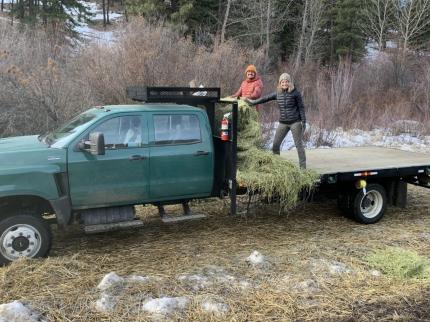
Wildlife Program report: Feb. 16-28, 2023
Managing Wildlife Populations
Burrowing Owl Artificial Burrow Mitigation Project Preps for the Season: District 4 Wildlife Biologist Fidorra made visits to several artificial burrow sites to check and repair owl burrows for the upcoming spring. Two owls were seen onsite and likely have overwintered here, which is not unusual in Washington’s Columbia Basin. Fidorra hopes to visit and prepare all 70 burrows prior to mid-March.
L.T. Murray Elk Feeding: Cold weather and a bit of snow have brought elk back into the feed sites. Feeding at the Robinson site remains on the lower road since the main access road is still too icy to drive.
|
DATE |
SITE |
COW/CALF |
BRANCHED BULL |
SPIKE BULL |
MORTALITY |
TOTAL |
|
|
2/11/23 |
Watt |
592 |
48 |
16 |
|
656 |
Aerial count |
|
2/11/23 |
Robinson |
529 |
47 |
16 |
|
592 |
Aerial count |
|
2/17/23 |
Watt |
143 |
19 |
12 |
0 |
174 |
Feed site |
|
2/27/23 |
Watt |
735 |
19 |
31 |
1 |
785 |
Feed site |
|
2/28/23 |
Robinson |
|
|
|
|
350 (estimate) |
Feed site |

Forest Grouse Wingbee: Assistant District Wildlife Biologist Wampole met with other eastern region staff members in Spokane for the annual wingbee. Hunters are asked to contribute both a wing and tail feathers to “wing barrel” collection sites. Washington Department of Fish and Wildlife (WDFW) and tribal staff members met to classify species, sex, and age classes from the voluntary wing barrel contributions collected this past season. This data is used to establish a harvest record and provide information on forest grouse populations.
Monitoring Disease: Bacteriology and serology results for Bighorn Sheep captures conducted earlier in the year found no confirmed active infections of Mycoplasma ovipneumoniae (MOVI) in captured and tested bighorn sheep.
Natural Resource Technician Blore and Natural Resource Worker Schneider assisted Assistant District Biologist Wampole, Lands Operations Manager Bates, and Conflict Specialist Wetzel collect a lymph node sample from a euthanized elk at the Watt feed site for Chronic Wasting Disease (CWD) testing.
Conflict Specialist Wetzel observed the CWD gland removal process on an elk that died of an infection at the Joe Watt feed site.
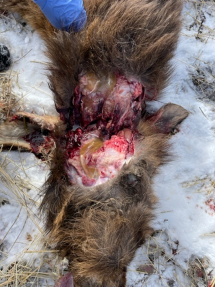
Muckleshoot Deer Study: Biologist Bernatowicz investigated a radio collar deer mortality in the Yakima River Canyon. The cause of the mortality could not be determined as all soft tissue, the head, and three legs had been consumed/removed by scavengers. There has been an issue with a batch of collars either false reporting mortalities or not reporting. In this case, the collar was stationary, but the mortality sensor failed to report. Any deer mortality in relatively open typically gets consumed in about 48 hours.
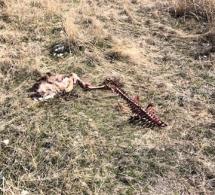
Sunnyside Agricultural Lease Monitoring: Biologist Bernatowicz reviewed over 1400 pictures taken by trail cameras in the Snipes Reserve agricultural fields between Dec. 7 and Feb. 16. After deleting double photos and those that didn’t capture enough terrain (fog at night), approximately 600 pictures were used for monitoring. Waterfowl, mostly geese, use was only observed for short periods of time between Dec. 23 and Dec. 27. Use was not significant enough to create any nearby hunting opportunities. While reviewing photos, three unusual objects appeared off the end of one field in one photo. The unknown objects appear to be targets in a reserve closed to access.
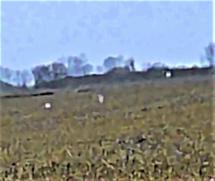
Sunnyside Snake River Wildlife Area Assistant Manager Rodgers and Natural Resource Technician Manderbach have recently constructed a box style beaver deceiver that will be installed at the outflow of the 7 Acre Pond wetland within the Mesa Unit. As seen from the picture below, beaver activity has become frequent and has caused flooding. This outflow structure was cleared of debris two weeks prior to this photo. The new beaver deceiver will prevent the blockage from debris and will allow for the water to flow.
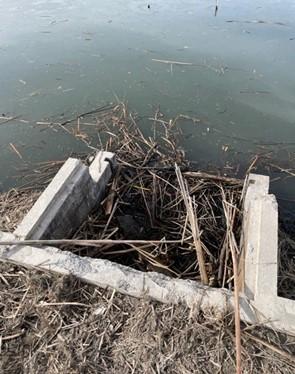
Providing Recreation Opportunities
Wenas Enforcement Coordination: Manager Hughes and Assistant Manager Taylor met with Sergeant Schroeder to go over priority areas of the Wenas Wildlife Area for patrolling. Hughes went over upcoming permits and larger group events that will take place on the wildlife area this spring including a long distance run off Lower Buffalo Road and a civil war reenactment. Hughes also provided an update about the Hoover acquisition and walk-in only access points, Durr Road target shooting area development, management of the Manastash Ridge Trails, and new signs that will be placed at the trail system. The Wenas Wildlife Area staff will continue to work on improving signage throughout the wildlife area at popular recreational sites where enforcement is patrolling and routinely responding to calls.
Wenas Target Shooting Clean Up: Recreation Specialist Frame removed multiple pick-up loads of trash from multiple spots within the wildlife area. Including Sheep Company designated target shooting area, Sheep Company Road, Roza Road, and North Durr Road.
Wenas Clearing Downed Trees: Assistant Manager Taylor and Habitat Specialist Miller removed windblown trees from elk fence. This ensures that the integrity of the fence is not compromised. Elk fence is essential to keeping wintering elk populations from potentially damaging adjacent private property. Assistant Manager Taylor and Habitat Specialist Miller also removed multiple windblown trees in and along Black Canyon Road. This helps to ensure that access is maintained to this site.
Providing Conflict Prevention and Education
Rattlesnake Hills Elk: District 4 Wildlife Conflict Specialist Hand met with wheat growers on Rattlesnake Mountain to discuss field conditions, elk activity, and coordinate hazing and damage permit hunting. All elk activity and observations are on the Hanford National Monument currently.
Silver Dollar and Blackrock Cattle Calving: District 4 Wildlife Conflict Specialist Hand met with three large livestock producers to discuss coyote related depredations during their calving operations. Although the coyote population appears to be strong in the area, local hunters and assistance from U.S. Department of Agriculture Wildlife Services have removed several coyotes, so losses have been minimal. Most producers are reporting that they are about 75% completed with calving for the year.
Yakima and Kittitas Counties: Conflict Specialist Wetzel and Technician Leuck worked with several hay growers who were having problems with elk in crops.
Conserving Natural Landscapes
Monitoring Proposed Construction Sites: District 4 Wildlife Biologist Fidorra made visits to some natural lots proposed for construction in Richland with Habitat Program staff members. Some shrubsteppe habitat remains on the site. A lot of jackrabbit signs and a black-tailed jackrabbit were seen during the visit! WDFW staff members will work with the city and developers to identify avoidance and mitigation options.
Standardizing Best Management Practices for Nesting Season Avoidance: District 4 Wildlife Biologist Fidorra worked with Habitat Program to draft tables to simplify construction buffers and nesting season windows for birds in the Columbia Basin portions of Region 3. More work is needed before finalizing the product to simplify and provide consistency in guidance for development projects in the region.
L.T. Murray Wildlife Area Fences: Natural Resource Technician Blore and Natural Resource Worker Schneider built metal gate brace points for corrals, jack knife, and pump house locations. They will replace wood brace points which burned in the 2023 Vantage Highway Fire. Natural Resource Worker Hamlin and Schneider continue to fix and rebuild fences in Parke Creek. These fences are part of the area's grazing pastures.
Providing Education and Outreach
Assistant Manager Winegeart worked the WDFW booth at the Sportsmen Show in Yakima. The booth was set up well and received much positive feedback from the public.
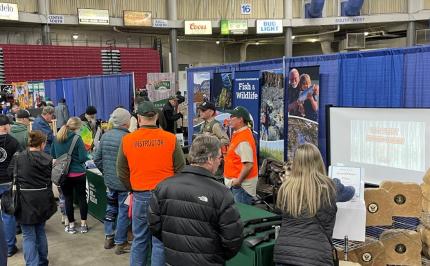
Other
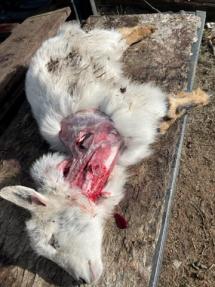
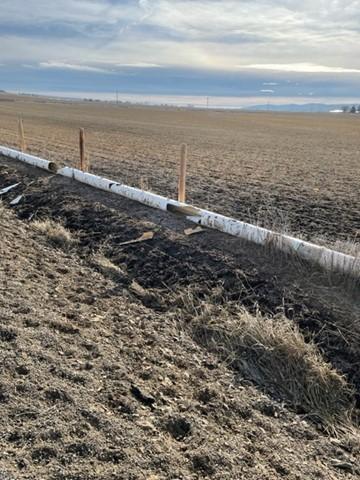
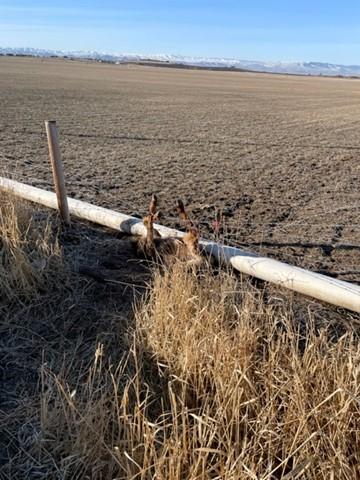
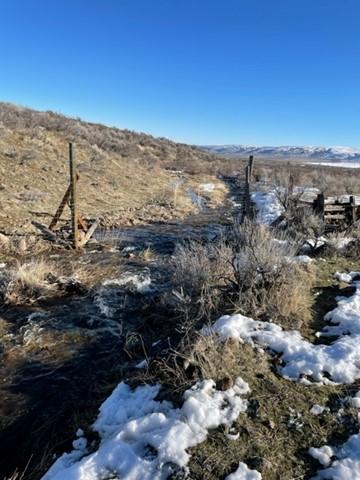
Managing Wildlife Populations
Bat Survey and Monitoring: Biologist Anderson worked with WDFW Bat Technician Leipold to maintain year-round acoustic units and survey a local man-made feature for prospect of hibernating bats. Townsend’s big-eared bats were located using the structure for hibernation. Townsend’s are a Species of Greatest Conservation Need under the Washington State Wildlife Action Plan (SWAP). District 12 staff members also investigated a few sites reported in the Green River Watershed that are rumored to hold bat roosting habitat and possible bats. Follow-up investigations will be necessary given access needs at sites visited. Similarly, Biologist Licence visited a new roost site discovered by Technician Leipold in a gun battery at Fort Ebey State Park on Whidbey Island to determine species composition. A mixed colony of Myotis and Townsend’s big-eared bats were identified, and guano was collected for further identification of the Myotis species. District 13 has also been coordinating with landowners and county officials on existing sites and a potential new site in Snohomish County for White-nose Syndrome research.
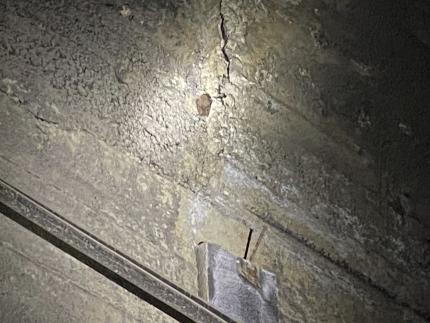
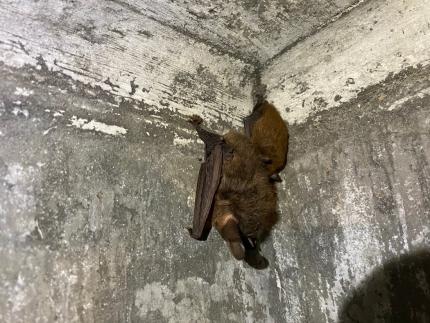
WDFW Seaduck Monitoring: Multiple Region 4 biologists assisted the WDFW Waterfowl Group with boat surveys targeting harlequin duck. Recently the harlequin duck harvest was closed due to concerns and need to reevaluate wintering population status of multiple wintering seaduck species (e.g. harlequin, scoter species, etc.) in comparison to past baseline data.
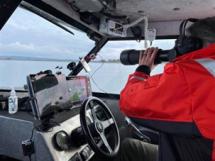
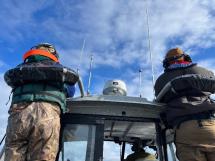
Providing Recreation Opportunities
Annual Green River Unit, GMU 485, Special Hunt Meeting: District 12 staff members participated in the annual WDFW-Muckleshoot-Tacoma Water Hunt Permit meeting. Hunts were planned out and agreed upon as well as brief updates regarding population monitoring, management efforts and needs, etc. Thanks to MIT and Tacoma Water for ongoing support and collaboration in all of this.
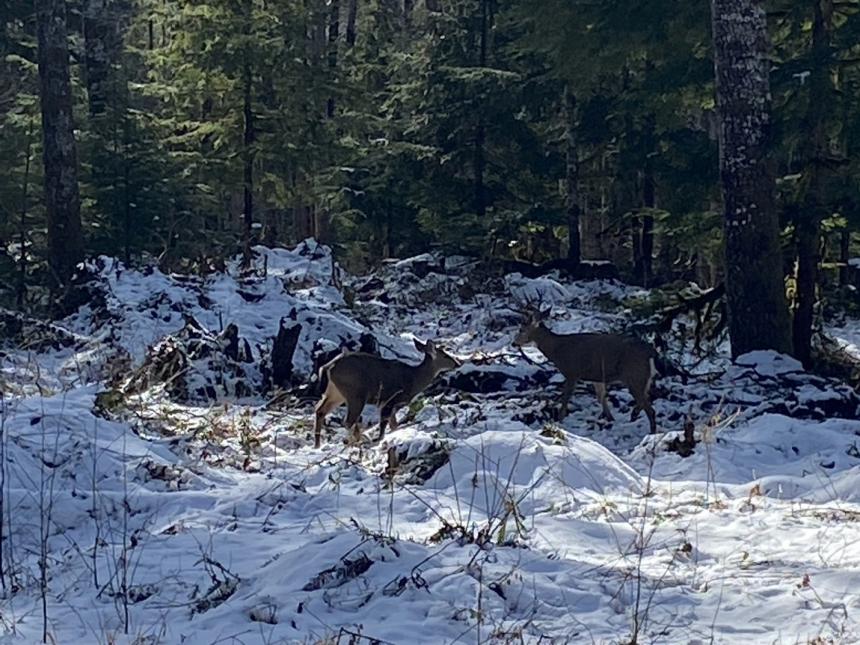
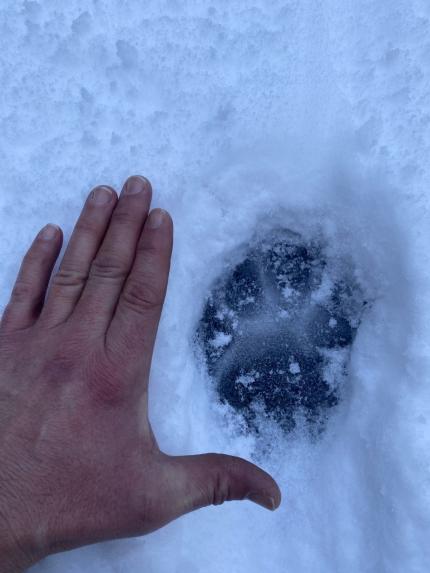
Skagit Headquarters Spur Dike: Skagit Wildlife Area staff members worked with the Capital Asset Management Program (CAMP) to repair damage to a popular walking trail on top of a dike at the Skagit Headquarters Unit.
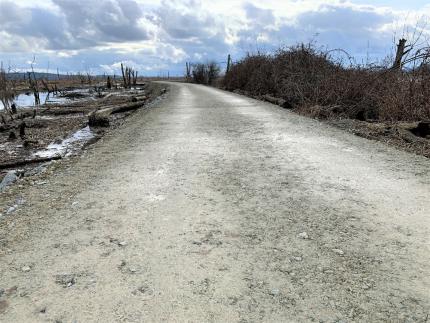
Cherry Valley Unit: Snoqualmie Wildlife Area staff members opened the gate to the north parking lot for the beginning of bird dog training season on the unit. Staff members also worked with a tree company to remove several poplars bordering the south parking lot that were at the end of their life span and were presenting a hazard to parked cars and users.
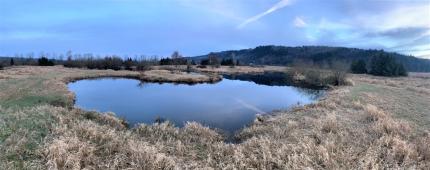
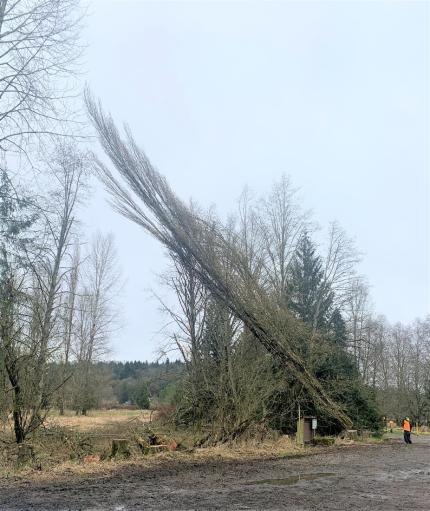
Providing Conflict Prevention and Education
Bridle Trails State Park Bat Use Conflict: Biologist Anderson removed a most likely temporary roosting silver-haired bat from a camping cabin at Bridle Trails State Park in Bellevue. The cabin was to be used by a family later that day and parks requested WDFW to respond so the cabin could be used as scheduled. Anderson placed the bat in an alternative roosting location in natural habitat and asked parks staff members to check on it once prior to dark and in next morning.

King County Department of Natural Resources and Parks (KCDNRP): Biologist Anderson met with representatives of KCDNRP regarding broader wildlife conflict reduction and acute issues with geese on beaches at area parks.
Conducting Business Operations and Policy
Training: Staff members with District 12 completed flight training because renewal is needed by this May.
Washington Bat Working Group Annual Meeting: District 12 attended the Washington Bat Working Group annual meeting. Much content focused on bat and white-nose syndrome monitoring. You can find more information on bats and white-nose syndrome on the WDFW website.
Point Elliot Treaty Tribes Mountain Goat Meeting: District 13, District 14, and WDFW Species Lead Moore participated in a mountain goat management meeting with eight tribal entities and a North Cascades National Park wildlife biologist. Attendees discussed many topics such as mountain goat population status across Washington, last year's survey results, 2022 harvest summaries, current and future management projects including 2023 survey funding, vendors, and personnel.
Managing Wildlife Populations
Finishing Gifford Pinchot Bat Hibernacula Surveys: Biologist Wickhem assisted the hibernacula survey team for one more day in mid-February. Wickhem and Technician Motiff skied six miles to survey six small caves outside Trout Lake. Technician Leipold and Bat Specialist Tobin snowshoed to two other caves on the same day. These surveys are part of a larger effort to survey a portion of the 600+ caves within the Gifford Pinchot to see which support hibernating bats, especially Townsend’s big-eared bats, which are a Washington Species of Greatest Conservation Need (SCGN) and a Priority Species under WDFW’s Priority Habitats and Species Program. Wickhem and Motiff counted 49 Townsend’s big-eared bats and one myotis species occupying three of the six caves. Tobin and Leipold found 21 Townsend’s and 17 myotis. As of Feb. 17, the effort to survey hibernacula in the Gifford Pinchot is complete for the season with the team surveying 39 caves total, all of which have not been surveyed in 20-30 years, if ever. Hopefully we will be able to visit these caves more often in the future.
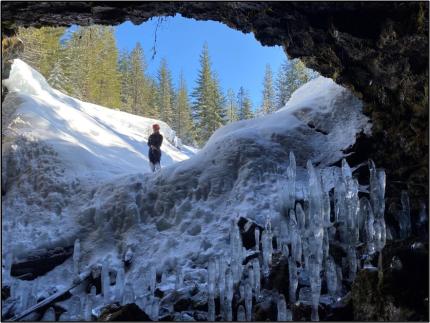
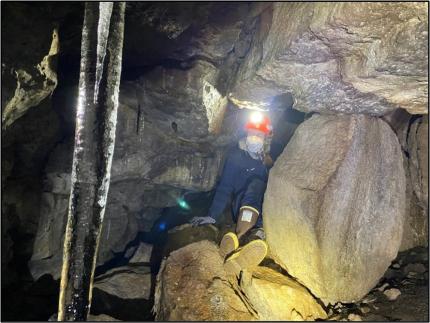
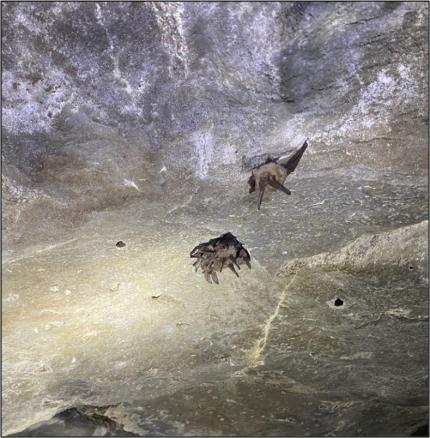
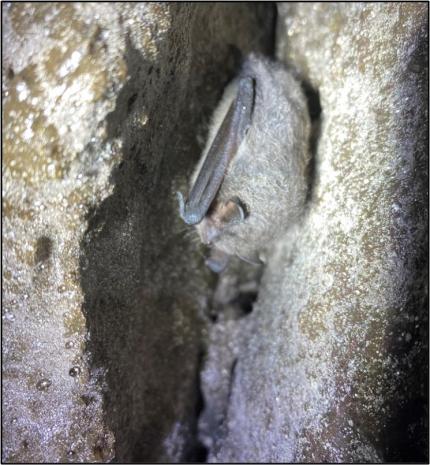
Elk Hoof Disease: Regional wildlife biologists, conflict specialists, and customer service staff members continue to manage the various logistics surrounding the Master Hunter Hoof Disease Incentive Program Hunts. These hunts are designed to help manage hoof disease while providing recreational opportunity. Hooves of elk harvested in these hunts are evaluated by WDFW staff members to determine the effectiveness of the program.
Dusky Canada Goose Surveys: Biologist Wickhem continued District 9 bi-monthly dusky Canada goose surveys on the Shillapoo Wildlife Area and surrounding wildlife areas. Dusky geese are a sub-species of Canada goose that spend summers in Alaska and migrate through and/or overwinter in the lower Columbia River area. Duskys are closed to recreational harvest due to low population levels. The purpose of the surveys is to count dusky geese observed and read alphanumeric codes on any red-collared duskys. Wildlife managers survey the geese multiple times across their primary wintering grounds and use the data to generate survival estimates. On this survey, Wickhem observed 26 dusky geese and read three goose collars. Assistant Wildlife Area Manager Breitenstein was conducting his own waterfowl surveys on the wildlife area and recorded an additional 111 dusky geese. Other notable sightings included nearly 300 swans, red-tailed hawks, northern harriers, bald eagles, great blue herons, egrets, sandhill cranes, thousands of snow geese and many species of waterfowl. Unfortunately, invasive nutria were also very active and several were spotted throughout the day.
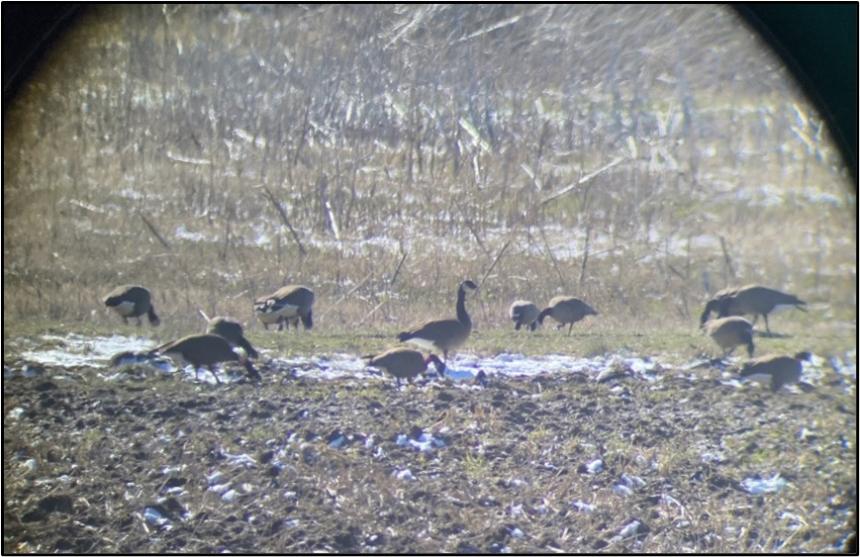
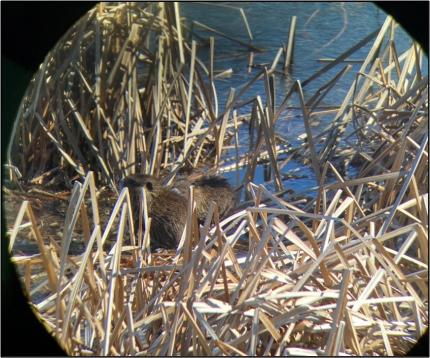
Providing Conflict Prevention and Education
Injured Elk: Wildlife Conflict Specialist Jacobsen and Biologist Bergh responded to a report of an injured elk on the side of the road in western Klickitat County. Jacobsen and Bergh assessed the female elk’s condition and decided that it needed to be euthanized. Based on its proximity to the road, its semi-mobile state, and the high volume of fast-moving traffic along the highway, Jacobsen requested traffic control assistance from law enforcement. WDFW Officer Myers and a Klickitat County deputy responded and blocked traffic for two minutes while Jacobsen euthanized the elk. A nearby landowner was able to salvage the elk carcass. In addition to sustaining injuries from the vehicle collision, the elk also had severe symptoms of hoof disease on one of her hind feet.
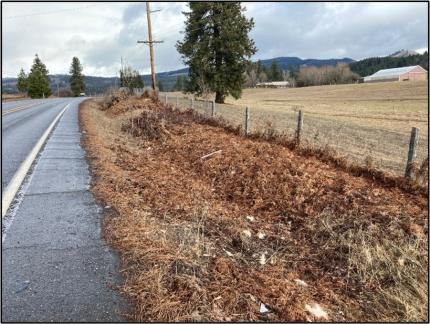
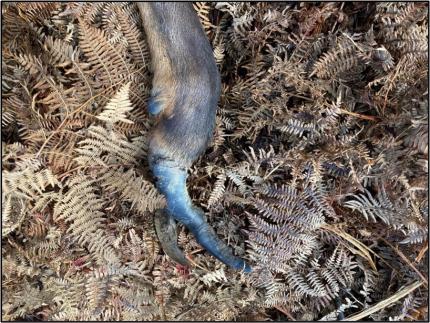
Proactive Wolf Deterrents: Wildlife Conflict Specialist Jacobsen proactively deployed several Fox Lights around a calving pasture in Klickitat County. The two known wolves in Klickitat County have been frequenting the area around the calving pasture for the past several months, and the livestock producer’s cows will be calving in the pasture within the next week or two. Jacobsen will continue to monitor wolf activity in the area and work with the livestock producer on additional deterrent measures if necessary.
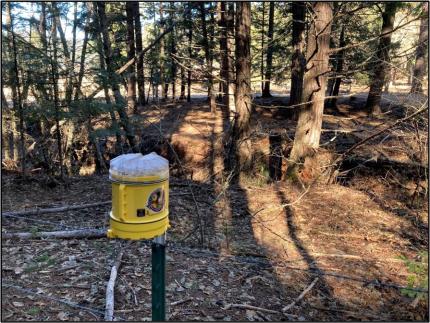
Trapped Duck: Biologist Wickhem responded to a call of a duck that was trapped in a gatewell of The Dalles Dam. Wickhem and Conflict Specialist Jacobsen consulted and devised several schemes to remove the goldeneye from the 30-40’ deep concrete pit. Unfortunately, the duck had died by the time she arrived, but Army Corps of Engineers Biologist Day gave her a tour of the areas where they have had waterfowl trapped in the past. This included the fish ladder, where three pelicans were trapped for several days last summer. The two discussed possible ways to deter birds from getting into these areas, but options are limited because most netting or coverings would impede regular maintenance of the dam. Biologist Day has been testing some alternative bird deterrent methods in other areas of the dam. Day was excited to have a contact in Washington to consult with about trapped waterfowl since technically the entire dam falls within Washington and not Oregon as most would assume.
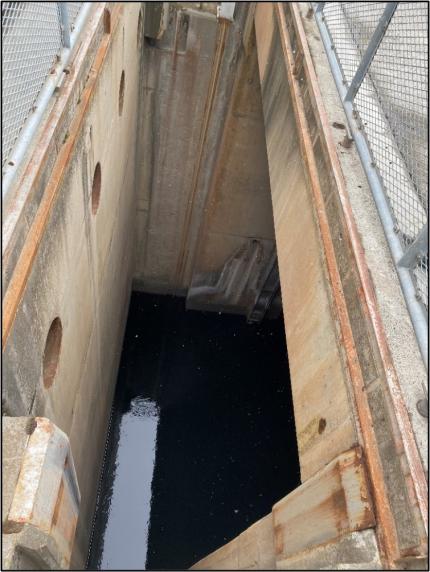
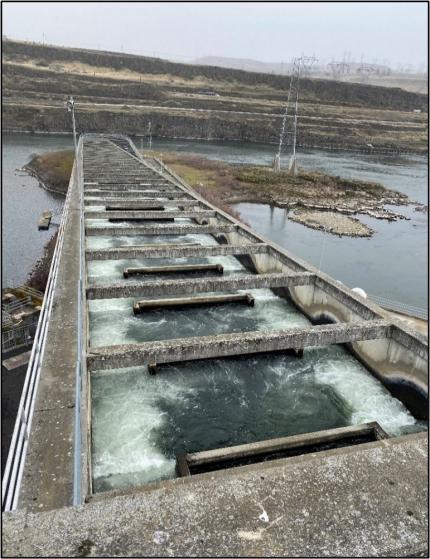
Providing Education and Outreach
Portland Sportsman’s Show: Wildlife Conflict Specialist Jacobsen, Assistant District Wildlife Biologist Stephens, Private Lands Biologist Ferris, Conflict Technician Kolenberg, Assistant Wildlife Area Manager Hunt, and District Wildlife Biologist Holman worked various shifts at the Northwest Sportsman’s Show in Portland. The event was well attended with hundreds of individuals stopping at the WDFW booth. The booth was outfitted with informational handouts, stickers, a trivia wheel, and a turkey hunting video game. The most popular wildlife related questions included Big-Game Hunting Regulations, Special Permit process and deadlines, costs of non-resident licenses, elk hoof disease, wolf management, and requests for clarification regarding specific locations and regulations. More broadly the attendees had many questions about fishing regulations, clam seasons, smelt seasons, and spring chinook forecasts.
Conducting Business Operations and Policy
Public Meetings to Gather Input Regarding the Draft Simcoe Mountains Unit Management Plan: Klickitat Wildlife Area Manager VanLeuven and Assistant Wildlife Area Manager Hunt joined Region Wildlife Program Manager Jonker, Habitat Biologist Johnson, District Biologist Bergh, Range Ecologist Burnham, Forester Pfeifle, and Public Outreach Specialist Couch in setting up for three public meetings and interacting with attendees to capture their thoughts and suggestions. The first meeting was in Toppenish at the Yakama Nation Headquarters Feb. 22 and the second and third meetings were at the Goldendale County Services Building on Feb. 23. All the meetings went very well, and the wildlife area staff members enjoyed meeting people that they probably would not have met otherwise. The meetings were lightly attended but the quality of the conversations at the meetings made them worthwhile.
Managing Wildlife Populations
Dusky Canada Goose: Biologists Novack and Cent completed another round of dusky goose surveys. Overall goose numbers in Grays Harbor County were low. A yellow collared cackler goose was seen off Parpala Road in Pacific County along with a healthy cohort of red-collared dusky Canada geese.
Providing Recreation Opportunities
Maintenance and Access Projects: The access team has tackled a variety of projects beyond the normal maintenance including cleaning illegal dumps, fence repair, sign replacement, graffiti removal and disposal of abandoned vessels.
Pierce County, Bay Lake: Team Members Friemund and Walker removed the abandoned boat from the Bay Lake access.
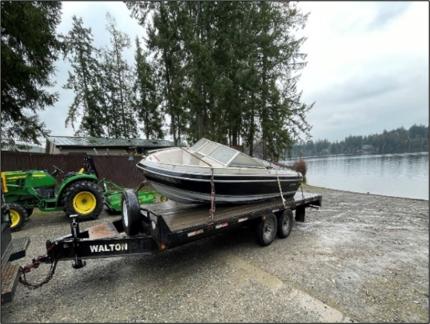
Pierce County, Kapowsin Lake: Access staff members replaced signs, repaired fencing and continue ongoing efforts for large amounts of vegetation removal.
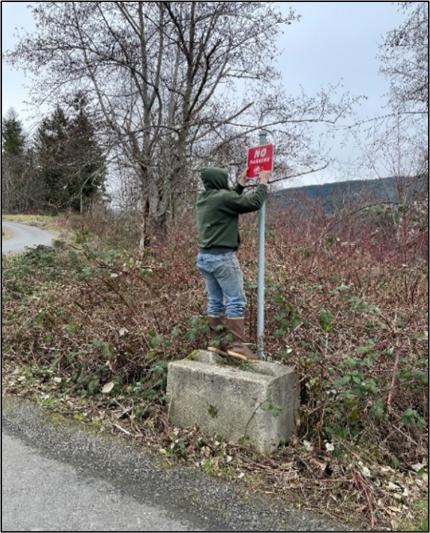
Kitsap County, Big Beef Creek: Big Beef Creek Team Member Walker assisted Wildlife Area Manager Laushman by removing a fallen tree blocking the access gate.
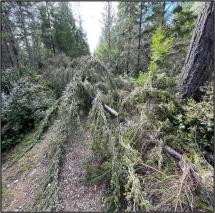
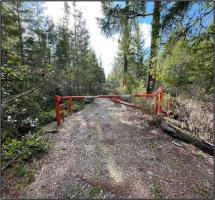
Grays Harbor County, Morely: Several illegal dumps were cleaned and disposed of.
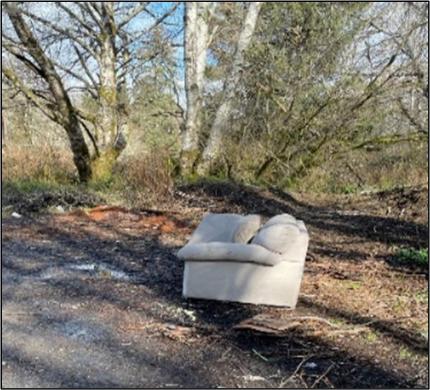
Grays Harbor County, Porter: The interior of the restroom at the Porter ramp was completely repainted due to graffiti, the before pictures were not included due to content. The numerous obscene graphics were covered up very quickly after being discovered.
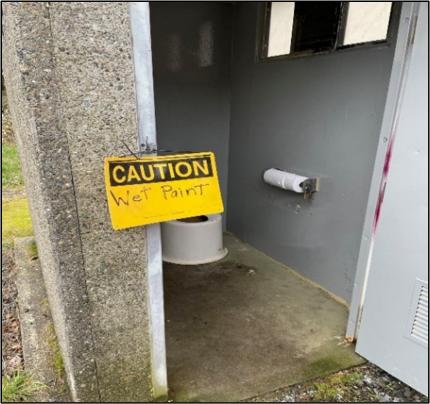
Conserving Natural Landscapes
North American Wetlands Conservation Act: Biologist Novack continues coordination and collaboration with Ducks Unlimited and various WDFW staff members on identifying restoration and acquisition projects for a North American Wetlands Conservation Act grant proposal.
Native Plantings: Wildlife Area Manager Laushman assisted with post-restoration plantings on McNeil Island with biologists from Department of Natural Resources, a Washington Conservation Corp crew and a Nisqually planting crew.
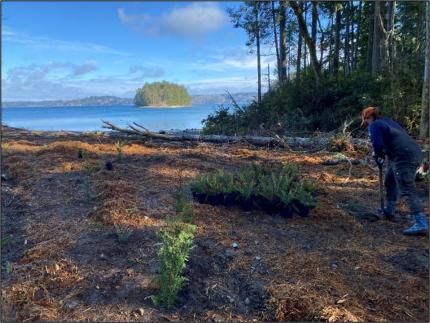
Tarboo Visit: Wildlife Area Manager Manager Laushman and Forest Health Specialist Tveten visited the Tarboo Unit of the North Olympic Wildlife Area to discuss plans to improve the forest health of densely growing stands.
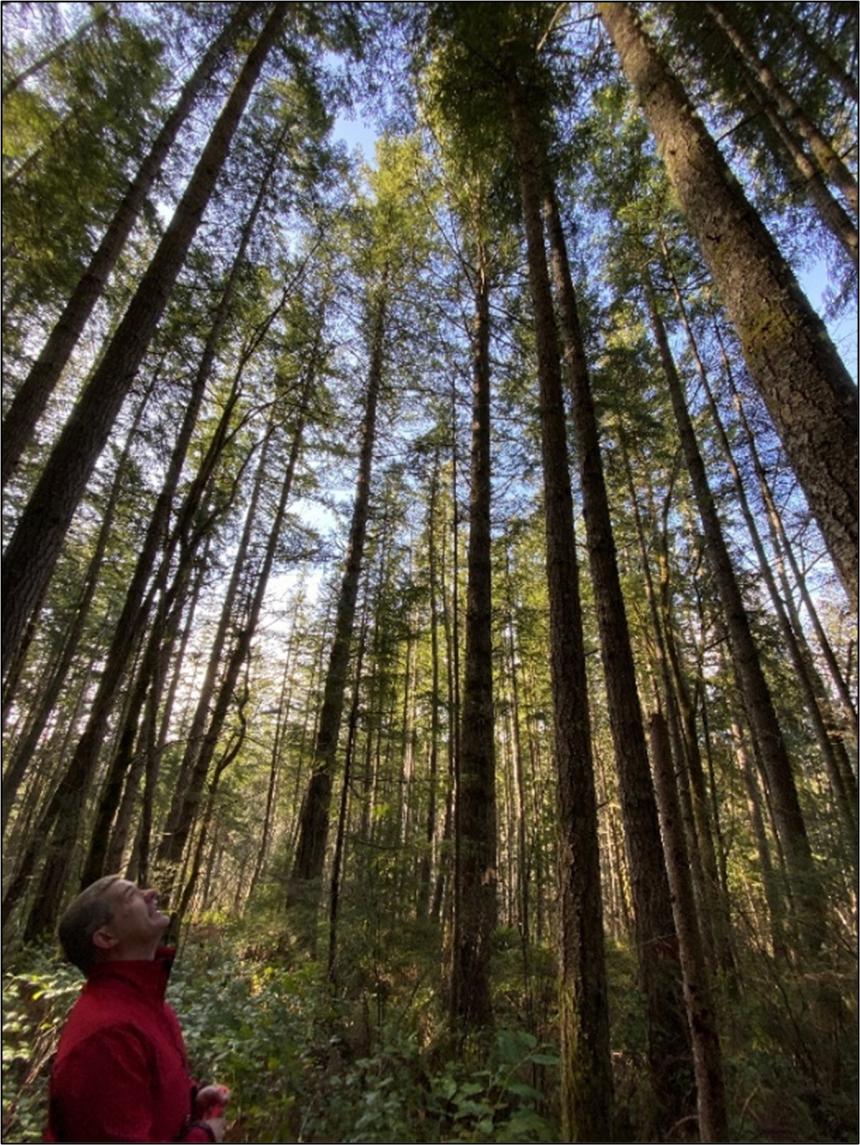
Providing Education and Outreach
Calls From Birdwatchers: Biologist Novack answered various customer service calls. What appears to be a common crane was seen associating with a small group of sandhill cranes near Elma. Apparently, the birdwatching networks are spreading the word for birders to check off an unusual visitor from their lists.
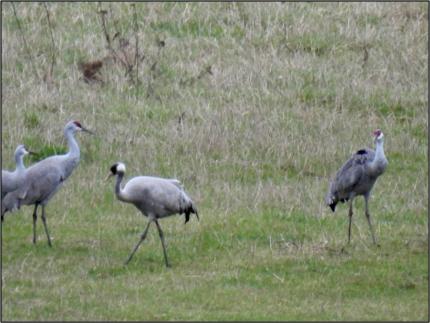
School Visit: Biologist Murphie gave a presentation about counting ducks and data at a local school.
Public Inquiries: Biologist Murphie answered public inquiries about deer and deer hunting, osprey, eagles, big game hunting, and ducks.
Conducting Business Operations and Policy
Snow Creek Resort: Access crew worked with Capital Asset Management Program on preparations for the upcoming work at Snow Creek Resort.
Grant Applications: Access Manager Reeves presented three Recreation and Conservation Office grant application presentations.
Public Contact: Access Manager Reeves met with several property owners that neighbor water access sites.
Aircraft Classes: Biologist Murphie held two aircraft related classes.